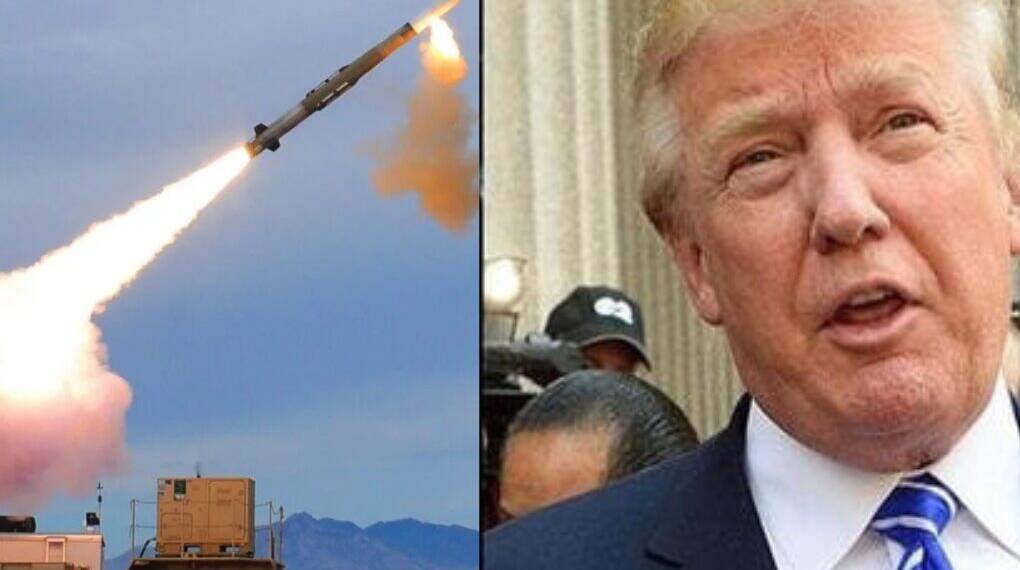Two simultaneous conflicts — Ukraine’s war with Russia and the recent 12-day Iran-Israel confrontation — have laid bare an uncomfortable truth: the United States, long considered the undisputed military superpower, is facing an alarming missile shortage.
With its munitions stockpiles severely strained, the Pentagon is scrambling to boost production of critical missile systems, from Patriot and THAAD interceptors to Long-Range Anti-Ship Missiles (LR-ASM) and Precision Strike Missiles (PrSM).
The crisis is prompting deep concerns in Washington: if wars with mid-level adversaries like Iran and proxy involvement in Ukraine can sap U.S. missile reserves so drastically, how prepared would America be in the event of a direct confrontation with China — a peer rival with thousands of ballistic missiles in its arsenal?
A System Exposed in Just 12 Days
The June 2025 Iran-Israel war was a wake-up call. According to U.S. defense officials, Terminal High Altitude Area Defense (THAAD) batteries fired roughly 150 interceptors during waves of Iranian ballistic missile strikes. That number represented nearly a quarter of all THAAD interceptors ever procured by the Pentagon.
At one point, Washington even contemplated diverting interceptors purchased by Saudi Arabia to Israel in order to plug immediate gaps. U.S. naval forces also expended vast numbers of shipborne interceptors, while Israel nearly drained its stockpiles of its indigenous defense systems.
If such pressure emerged in less than two weeks of fighting with Iran — a nation weakened by decades of sanctions — experts argue that a prolonged, high-intensity conflict with China would overwhelm U.S. stockpiles within weeks.
Pentagon Push: The Munitions Acceleration Council
Recognizing the threat, the Pentagon has launched an emergency initiative to accelerate missile production. Deputy Defense Secretary Steve Feinberg now chairs the Munitions Acceleration Council, which holds weekly meetings with defense executives, including industry giants like Lockheed Martin, Raytheon (RTX), and Boeing, as well as new entrants like Anduril Industries.
The Pentagon’s requests are sweeping companies are being asked to double or even quadruple production rates for interceptors and advanced missiles. The focus is on 12 priority weapons, including:
Patriot PAC-3 MSE interceptors
THAAD interceptors
Long-Range Anti-Ship Missiles (LR-ASM)
Precision Strike Missiles (PrSM)
Standard Missile-6 (SM-6)
Joint Air-to-Surface Standoff Missiles (JASSM)
Yet defense contractors remain cautious. Without firm, long-term contracts, firms fear they may over-invest in production lines that could be idled later. “Companies don’t build these things on spec,” said Tom Karako of the Center for Strategic and International Studies. “There needs to be an expression of support with money. It can’t just be words.”
Industry Response and Bottlenecks
Despite hesitation, manufacturers are already scaling up. Lockheed Martin is investing over $100 million to expand Patriot missile production facilities. Boeing has completed a 35,000-square-foot factory expansion to increase seeker component output for Patriot systems. Raytheon’s leadership has pledged readiness but insists on government-backed contracts and funding guarantees.
The Pentagon recently placed an order for 1,970 PAC-3 MSE interceptors worth $9.8 billion, but Lockheed Martin is simultaneously fulfilling orders from 17 allied nations. Similarly, THAAD production will take 3–8 years just to replenish the interceptors fired in the Iran war, according to the Jewish Institute for National Security of America (JINSA).
These bottlenecks highlight the broader challenge: U.S. defense industries, despite their technological prowess, were not built for the pace and scale of production demanded by modern, missile-heavy warfare.
The Shadow of China and Rare-Earth Dependencies
The missile shortage is not just about money or production capacity. China controls much of the global supply of rare-earth magnets, vital components for missile seekers and guidance systems. Any disruption in this supply chain could choke U.S. missile production just as Washington seeks to ramp up.
Meanwhile, Beijing, Moscow, and Pyongyang all maintain vast missile stockpiles, dwarfing those of Iran and posing a far greater strategic threat.
A Doctrinal Wake-Up Call
For decades, the Pentagon’s military doctrine was shaped by Cold War assumptions of limited, high-tech engagements. Analysts now argue that this thinking is outdated. Modern warfare, as Ukraine and Iran have demonstrated, is increasingly defined by sustained barrages of cheap and plentiful missiles, rather than limited, precision strikes.
Vice Admiral Brad Cooper warned Congress in June about the lack of “magazine depth” in U.S. missile reserves, underscoring that America’s arsenal is ill-prepared for long wars of attrition.
As one analyst bluntly put it: “We are at long last waking up to the need for massive defensive munitions procurement.”
What next? Buying Time or Falling Behind?
The Pentagon’s efforts to supercharge missile production may eventually restore U.S. readiness, but the road is long. Scaling up manufacturing, securing rare-earth supply chains, and convincing contractors to invest in expanded capacity will take years and tens of billions of dollars.
Until then, America’s adversaries may see an opportunity. The “missile crisis” unfolding today is not just about numbers — it is about credibility. Can the United States truly guarantee missile defense for itself and its allies in an era of missile-saturated warfare?
The wars in Ukraine and Iran suggest that the answer, for now, is deeply uncertain.








